In the footsteps of the exhibition Eurosatory 2016: trends in the development of armored vehicles. Part of 2
The Italian army launched the Centuro II program to replace armored vehicles with an 105-mm rifled gun with a new machine with better protection, armed with an 120-mm gun.
The 25-th anniversary of the beginning of operation of the first original Centauro cars is approaching, and since the draft requirements for the 80xXNNMX armored car were issued at the beginning of the 8-s, great changes have occurred in the operational scenario. In this regard, the Italian army and the consortium Consorzio Iveco Oto Melara (CIO) began to work together on a new machine with a larger caliber cannon. One of the main areas of improvement was protection, especially the protection of the bottom, for example, from mines and IEDs (improvised explosive devices); when designing the original Centatiro, this was not paid enough attention to operational considerations. Another trend was to increase firepower: since the Italian army was armed only with the main Ariete battle tank with an 8-mm smoothbore gun, the army took into account issues of uniformity, as well as combat effectiveness. The draft document was published in October 120, and the final requirements were issued in December 2010. Two contracts were signed, one for the development of a new engine and one for the development and production of a prototype, which is known as the Nuova Blindo Centauro (Centauro new armored vehicle), although it is often called Centauro II in industrial circles.
In the requirements, depending on the configuration, the combat weight is defined approximately in 30 tons, and when installing the armor set “A” the specific power is defined in 24 hp / t. It was clear that the power of the six-cylinder engine of the original Centauro 520 horsepower, also mounted on the Freccia 8x8 infantry combat vehicle, was insufficient. In this regard, the contract provided for a modification for military purposes of the existing eight-cylinder engine Iveco Vector 8V, used in the railway and energy sectors. The engine complies with the Euro 3 standard, according to which it can be dual-fuel (diesel / petrol) without the need to change the electronic settings. The “militarization” process involved upgrading the injection system to get a dual-fuel engine, upgrading lubrication and cooling systems, which are also responsible for cooling the transmission, installing the generator on the 560 Amp and additional power take-off shafts. As for the transmission, here the choice fell on the ZF Ecomat 7HP902 with seven forward gears and one rear; This system is well known to Iveco DV because it is installed on Astra 8x8 trucks. The new generation engine has significantly more power, which saved 250 kg compared to the power unit of the previous version of Centauro; The new engine has power 720 hp, and the old one at 180 hp less. The car has three battery compartments (two on the left and one on the right), each of which has two batteries; two batteries are designed to start the engine and four for powering the onboard equipment. CIO has chosen lithium-ion batteries, which have much more charge cycles and give a constant current of 24 Volt, which is 30% more compared to lead batteries. The first two axles remained manageable, the fourth axle steering is activated only at low speeds, providing a turning radius of less than 18 meters. Hydraulic steering allows you to cope with the greater mass of the machine, but on the new model, in order to save space, the “one-and-a-half steering circuit” scheme was adopted, which made it possible to remove one cylinder. The Michelin 14.00R20 XZL / XML wheels are the same as those of the entire Centauro family, they have VFI-resistant inserts and are connected to a tire pressure control system.
Middle plan of the tower Centauro II. It is equipped with a Hitrole Light DUBM (pictured without weapons) and a circular antenna jamming system.
In terms of protection levels, the manufacturer does not give specific numbers, it is only known that the set “A” is added to the main steel case, but the set “B” is also available. In order to save mass, research was conducted for each part of the hull, and as a result, a total of seven types of ballistic panels were developed for each of the kits. The hull booking kits were developed entirely by Iveco DV engineers. With some modifications in the Centauro II, the typical “H” drive circuit was preserved (the power flow from the engine is divided into two parallel flows along the sides of the machine). At the rear, the roof is slightly raised, which made it possible to obtain more space for integrating the underbody protection system against mines and IEDs. The hull is divided into three main parts, the front with the engine, the central empty for the installation of the tower and the rear for a set of ammunition. For the driver, located in front of the left, the concern CIO offers the possibility of driving on displays; The machine is equipped with four day / night cameras and three cameras for low light levels. The main day / night camera of the driver is installed on the front front sheet and allows you to see the edge of the sheet to estimate the distance to objects. Two of the same cameras installed on the sides of the Centauro II and directed forward and one camera installed in the stern. One camera for low light is installed in the front of the car and the other two are installed on the rear-view mirrors and are directed forward. Images from these cameras, as well as images from other onboard sensors, can be displayed on three screens, which also display the operating parameters and data of the onboard monitoring and diagnostics system. A backup gyro is installed. Evaluation of the driver’s vision system will begin in the 4 quarter of the 2016 year.
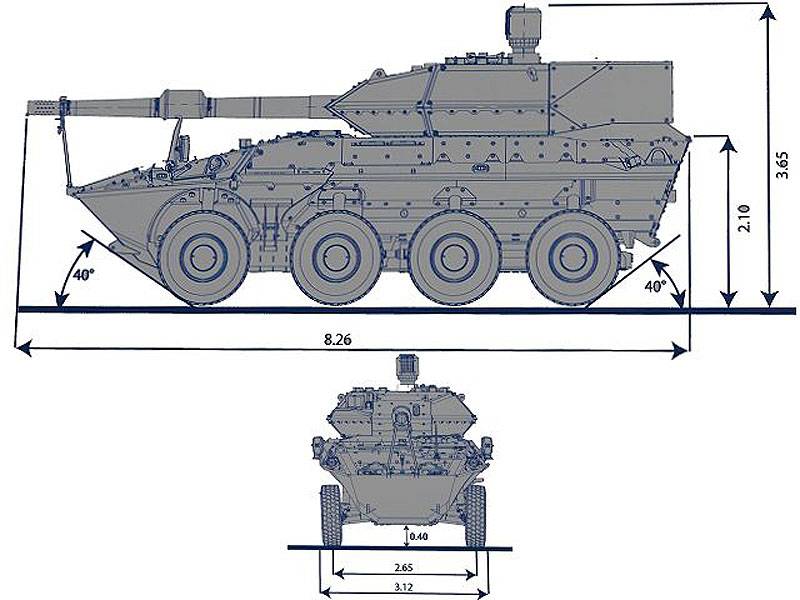
Main dimensions of ACS Centauro II
As already mentioned, the rear of the chassis is designed to accommodate the main gun ammunition. Ammunition is loaded through the aft door, two revolving magazines with 9 and 10 shells, respectively, are placed on each side of the aisle. An armored bulkhead with a central door seals the ammunition compartment in a hermetic manner from the central part of the hull; shots are served through two armored hatches. According to the calculations, the bulkhead provides protection for the tower’s crew against the simultaneous ignition of three conventional projectiles (non-inert). In case of an emergency, the central passage can also be used as a crew emergency exit.
Centauro prototype with an 120-mm cannon at the Rheinmetall Unterlus test site during tests conducted to verify compatibility with all types of 120-mm ammunition
More 12 120-mm shells are placed in the back of the tower; Thus, the gunner-gunner has at its disposal a 31 projectile. The Centauro II tower was designed by Finmeccanica Defense Systems (formerly Oto Melara). The habitable tower compartment is made of a lightweight ballistic alloy, to which protection sets of levels “A” and “B” can be added; the back part is entirely made of composite material. The volume where the ammunition is placed is designed so that, due to the special-shaped surfaces, any combustion products are removed from it, while a separate fire / anti-explosion system in an emergency reduces the temperature inside the compartment and prevents the ammunition from igniting. The rotating magazine for six shells is located in the aft compartment of the turret, its ammunition is ready to be fired and is fed into the charging chamber; the shooter selects the appropriate projectile using the fire control system, the drum is rotated, feeding the projectile to a side-shift using the electric flap. The breeder opens the breech (the only manual operation), then the projectile is sent to the chamber, the breech automatically closes and the gun is ready to fire. To the left and right of the central door there are two manually torn doors; a rack with six 120-mm shots and part of the communication kit is located behind the right door (behind the shooter), while ammunition ammunition for auxiliary weapons is located behind the left door. As in the original Centauro machine, the shooter is located at the bottom right, charging at the top right, and the commander at the left.
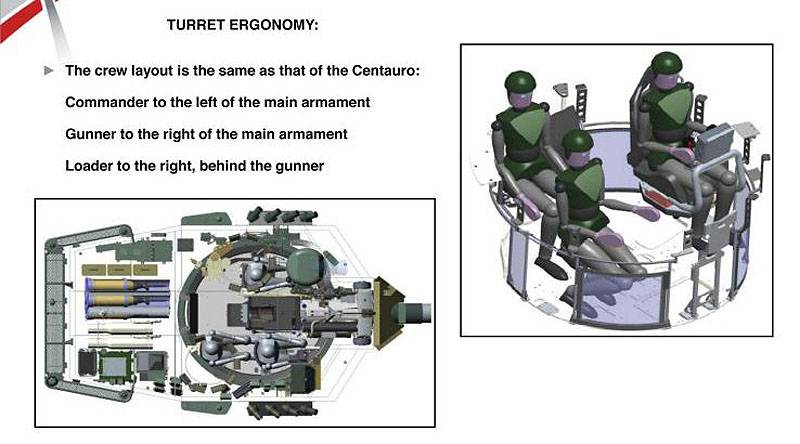
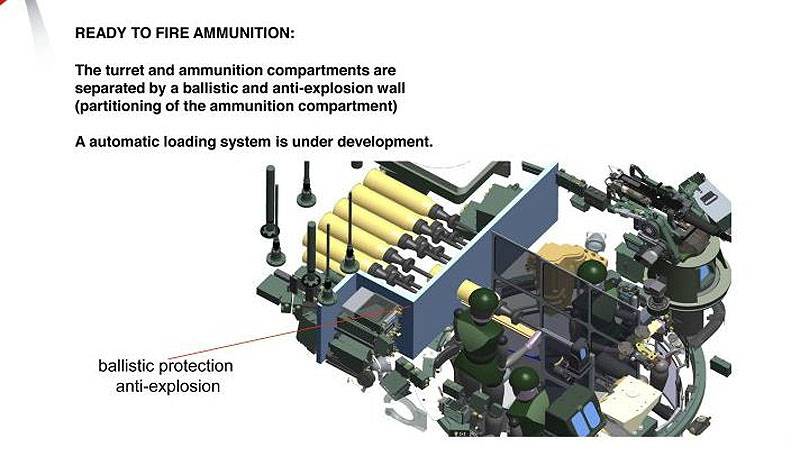
New tower (combat compartment) of the promoted wheeled armored vehicle Centauro II
The 120 / 45 smoothbore gun is a new development from Oto Melara and is characterized by a perforated muzzle brake typical of the Centauro family, which allows firing even with caliber stabilized ammunition that is poorly compatible with slit muzzle brakes. All drives are electric, the maximum transfer speed is 0,4 rad / s with acceleration 0,7 rad / s 2, while the maximum speed of vertical guidance is 0,5 rad / s with acceleration 0,8 rad / s 2; vertical homing angles from -7 ° to + 16 °. The fire control system is a modernized version of the OMS installed on the Centauro and the Ariete tank, while the optoelectronic systems are all new. The commander now has the Attila D fully digital panoramic periscope developed by the Land and Naval Electronic Division of Leonardo-Finmeccanica (formerly Selex ES). It includes a fully stabilized touch package consisting of a Full HD color camera with x10 optical zoom, a Erica 3 generation thermal imaging camera with an 640X512 pixel matrix with 16 μm pitch, operating in the 3,7-5,0 μm range, and a laser rangefinder with a range 10 km. The Attila D periscope head with all this built-in electronics has vertical angles of + 60 ° / -20 °. The commander has two displays: the 12 inch is mainly used for the guidance system and the 10 inch display for the SICCONA command and control system. The newest member of the Lothar family — the Lothar SD sighting digital arrow system — includes a color HD camera, a Tilde B thermal imaging camera operating in the 8-12 μm range, and the same laser range finder as in the commander periscope. When the sighting system fails, the commander can fire with his periscope. In the event of a power failure, a backup telescope is available for the shooter.
As already mentioned, the command and control system is based on the latest version of SICCONA, adopted by the Italian army; in comparison with the equipment of previous machines, for example Freccia, more powerful computers and new displays are installed. A set of six radio stations guarantees the maximum level of communication: it includes Turma CNR2000 HF for long-distance voice and data transmission, SDR VM3-SBW UHF, connecting a machine with soldiers in the field, a broadband UHF radio station HCDR, two radio stations SRT-635 SINCGARS VHF for medium-range voice and data communications and a Harris AN / PRC 152 UHF radio station providing satellite communications and aircraft communications, as well as serving as an emergency portable radio station. A system has been installed to combat the VCA - the Guardian H3 Stack silencer, these are four conformal antennas around the machine’s perimeter and two standard antennas on the roof of the tower. Also installed a new version of the receiver warning of laser irradiation RALM.
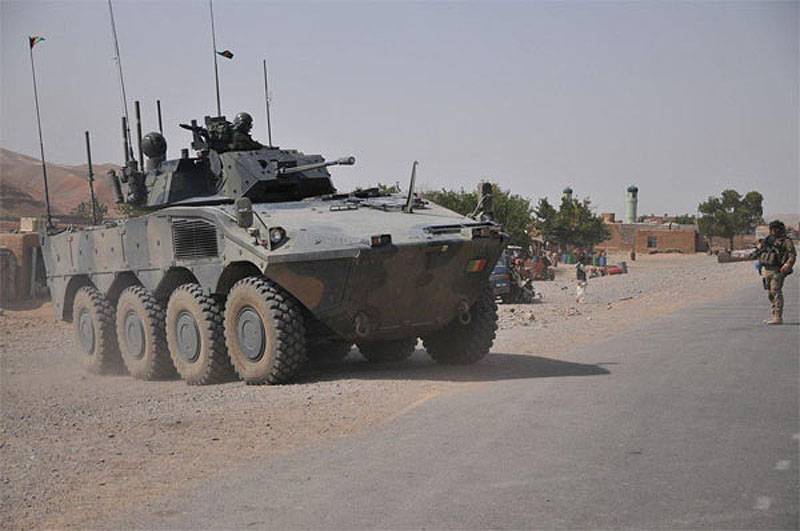
Freccia machine of the Italian army in Afghanistan. The level of protection of the Centauro II was upgraded to reflect the combat experience gained in this theater.
Spain will adopt the Piranha 5 as the basis of its new 8xXNNXX wheeled BMP. It’s not clear yet when the first prototype will be available and how many cars will be purchased.
The auxiliary weapon includes a twin 7,62-mm machine gun with three ammunition cartridges for 250 cartridges, as well as a remote-controlled Hitrole Light combat module, which can be armed with an 7,62 or 12,7-mm machine gun or an 40-mm automatic grenade launcher, respectively with four XNX - cartridge boxes, four 250-cartridge boxes or two 100-cartridge boxes. Compared with the previous tower with an 48-mm cannon, whose combat mass with all the equipment and full ammunition is 105 kg, the new tower with the 7800-mm cannon and Level A armor kit weighs 120 kg. It should be noted that when installing the 8700-mm gun, the capacity of the new turret is preserved.
The CIO consortium carried out numerous ballistic and anti-explosion tests; four machines and towers, as well as several ballistic kits were made for this purpose. Firing tests have already been carried out, the configuration must be finally approved after the Eurosatory 2016 exhibition, and in the fourth quarter of the year 2016 the qualification process will begin by the Italian Ministry of Defense. The Italian army intends to replace the current Centauro with a new machine in its reconnaissance regiments; However, looking at the current budget, it is not clear when the first contract will be signed.
The development of the Centauro II will have an impact on existing vehicles, for example, the development of the next version of the VBM Freccia armored vehicle, designated VBM +, which can take the engine and protection designed for the Centauro II artillery with an 120-mm gun, is being considered. At present, the CIO consortium has placed most of the Freccia vehicles in the first middle brigade “Pinerolo”, with the exception of commander and reconnaissance options, which are at the final stage of refinement and the requirements for which are still being finalized. With appropriate funding in the fourth quarter of 2016, the first batch of vehicles should be ordered, designed to form the second middle brigade.
The Danish army will be the first to adopt the development of the company GDELS for the Piranha 5 armored vehicle. In the photo version of the 8x8 armored personnel carrier, which will replace the Danish armored personnel carrier М113
The new Piranha 5 armored vehicle, first presented at Eurosatory 2010, achieved its first big success in 2015, when Spain and Denmark announced the choice of the newest model 8x8 from the well-known family, which the Swiss company Mowag, which is currently included in General Dynamics European Land Systems (GDELS) staff. In September of the same year, Spain signed a low-risk research contract for this machine worth 89,2 million euros, which was issued to the temporary joint venture UTE VCR 8x8, formed from Santa Barbara Sistemas (part of GDELS), Indra and Sapa; the last two are responsible for the electronic architecture and communication kit and power unit, respectively. The goal here is to get a fully Spanish product that will later be offered in the overseas market. A three-year research and development contract funded by the Ministry of Industry includes the manufacture of five pilot machines. The car, known under the designation VCR (Detegico de Combate sobre Ruedas), will undergo a comprehensive test in the Spanish army, which will decide in 2018 about the possible initial production. Thus, Spain, one way or another, will receive a completely national decision, for this it rejected the proposals of the French Nexter with the VBCI machine and the Italian consortium CIO (between Iveco DV and Oto Melara) with the Freccia machine, although both vehicles were tested in combat conditions in Afghanistan .
The Piranha 5 armored vehicle with its combat weight of 30 tons (although it can reach 33 tons) and the payload of 13 tons can be transported in the A400M military transport aircraft. It will be assembled at the GDELS plant in Seville, while the chassis will be manufactured at the Trubia plant. According to the available information, the Spanish army may not use all the available payload, but will be satisfied with the combat mass of 25-26 tons and thus leave room for future upgrades. Part of the machines must be delivered in the version of an armored personnel carrier with a double-action drive with an 7,62-mm or 12,7-mm machine gun; also an option for an infantry fighting vehicle with a turret armed with an 30-mm cannon and a Spike ATGM. It is worth noting that during the first public appearance in 2010, the Kongsberg tower with an 5-mm cannon was installed on the Piranha 30 machine, and GDELS offers weapon installations up to the 120 caliber mm. The needs of Spain range from 300 to 400 machines, and the number of 340 in this case is the most likely.
For the BMP version of its Piranha 5 (pictured with the DUBM), GDELS offers mid-caliber towers, as well as towers with an 120-mm cannon for the fire support option
Although the first contract was signed with Spain, the first country to deploy the Piranha 5 armored vehicle will be Denmark, since it signed a contract in December 2015 of the year for mass production and supply of 2018 to 2023 year 309 machines. The Danish contract is not only the first successful contract for the Piranha 5, but also marks the transition from tracks to the wheels of another country. Selected bidders were divided equally: Armadillo (CV-90 modification) from BAE Systems Hagglunds and PMF G5 from FFG represented the “track group”, while VBCI from Nexter and Piranha 5 from GDELS represented the “wheel group”. The contract was signed between GDELS-Mowag and the Danish Defense Procurement Organization (DALO) and includes six different vehicle variants - infantry, commander, sanitary, engineering mortar and repair, which will replace the corresponding versions of the outdated M113 BTR. The total need of the country is 450 machines Piranha 5, and therefore the contract provides for several options, which in case of urgent need will increase the number of cars to this figure. Denmark is already armed with Piranha 3, as well as other GDELS vehicles, such as the Duro III and Eagle IV, for which a multi-year framework service contract was signed several days after signing the Piranha 5 contract.
It is worth noting that the Piranha 5 is not the latest development in the family. In June, 2014, at Eurosatory, GDELS unveiled the Piranha 3 + model. Compared with the latest versions of the Piranha 3, the new machine has its own weight of 16 tons versus 13,4 tons and 11 tons payload versus 9,2 tons; internal volume increased from 13,5 to 14 m3. To cope with the maximum combat weight of 27 tons allows the new Caterpillar C13 engine with 520 horsepower, which was replaced by the original HP 400 engine; Hydropneumatic suspension is offered as an alternative to the traditional. The Piranha 3 + armored vehicle implements modular security solutions that increase the level of protection against mines and IEDs. These solutions are also offered as upgrades to the existing Piranha 3 fleet, while much of the powertrain enhancements are based on the work carried out as part of the Canadian LAV machine upgrading program and the powertrain of the American Stryker ECP powertrain. As part of the process of cross-border consolidation in the land-based systems sector, Kongsberg, a symbol of remotely controlled combat modules, acquired 49,9% of Patria in March 2016 of the year. Thus, the Scandinavian defense conglomerate was formed, taking into account that Patria owns 50% of Nammo, and the remaining 50% is owned by the Norwegian state. This will further enhance the company's commercial opportunities in the world.
The armored vehicle Piranha 3 + was first presented at the Eurosatory 2014 exhibition.
Продолжение следует ...
Articles from this series:
In the footsteps of the exhibition Eurosatory 2016: trends in the development of armored vehicles. Part of 1
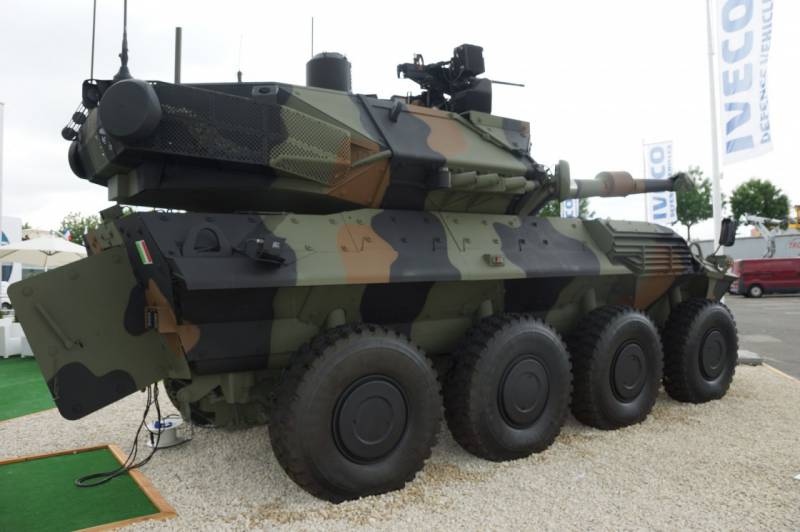
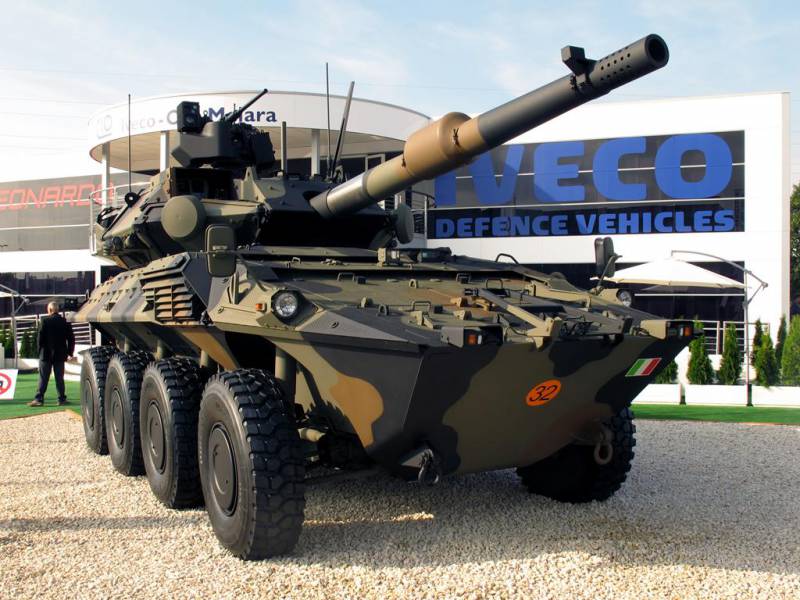
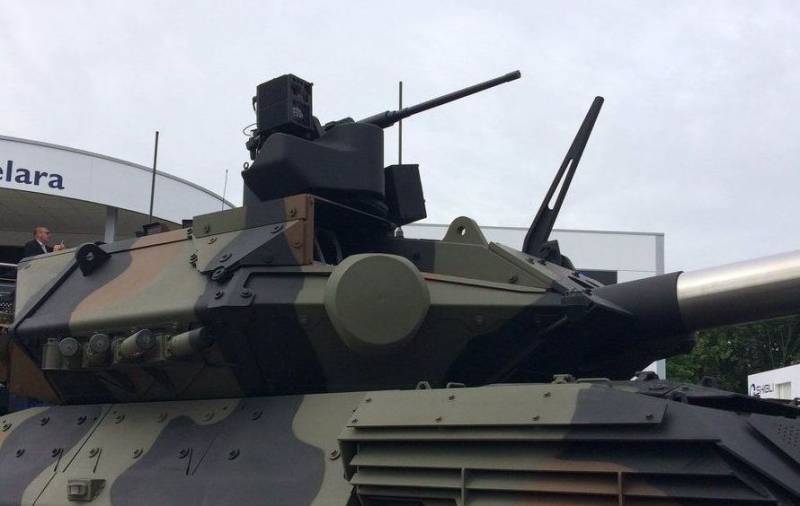
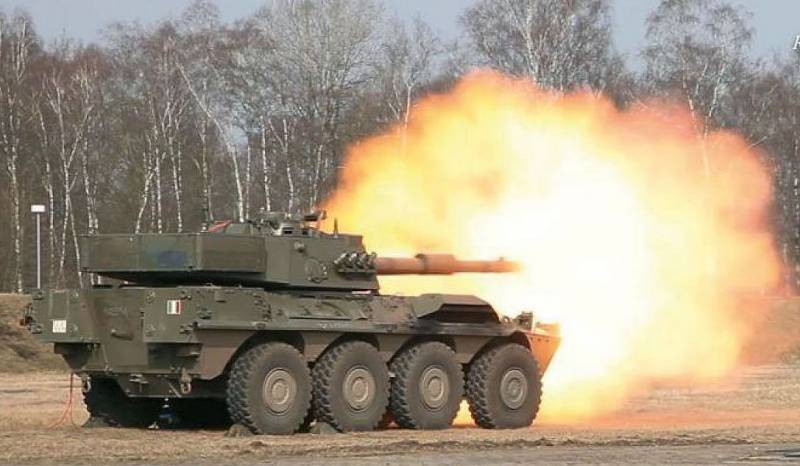
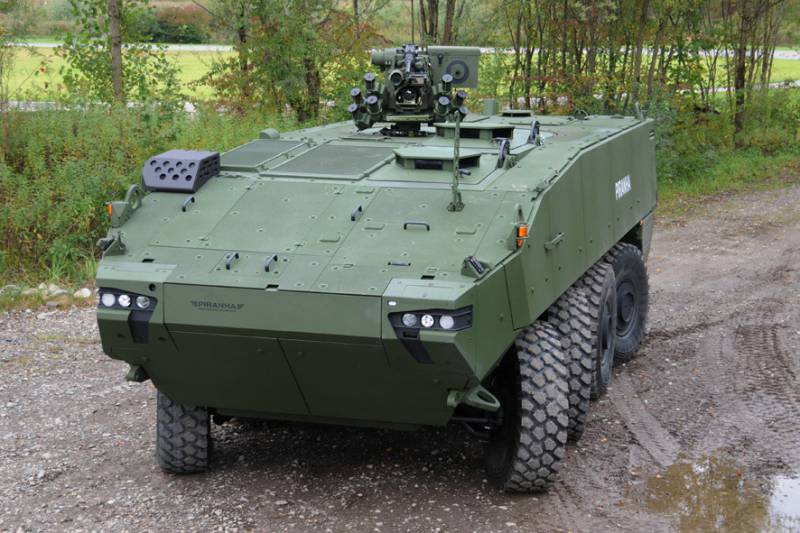
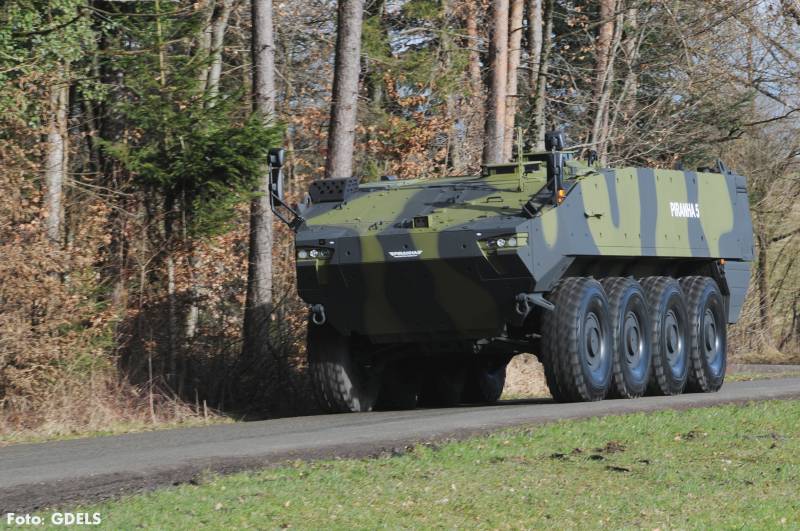
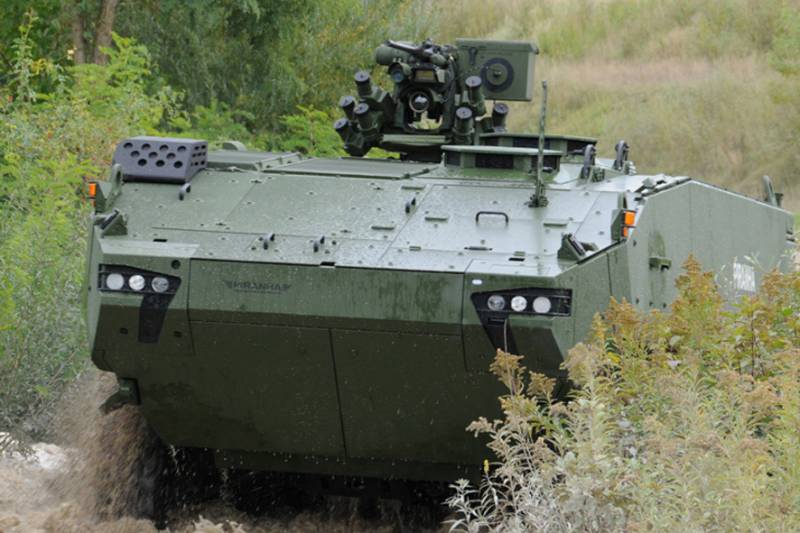
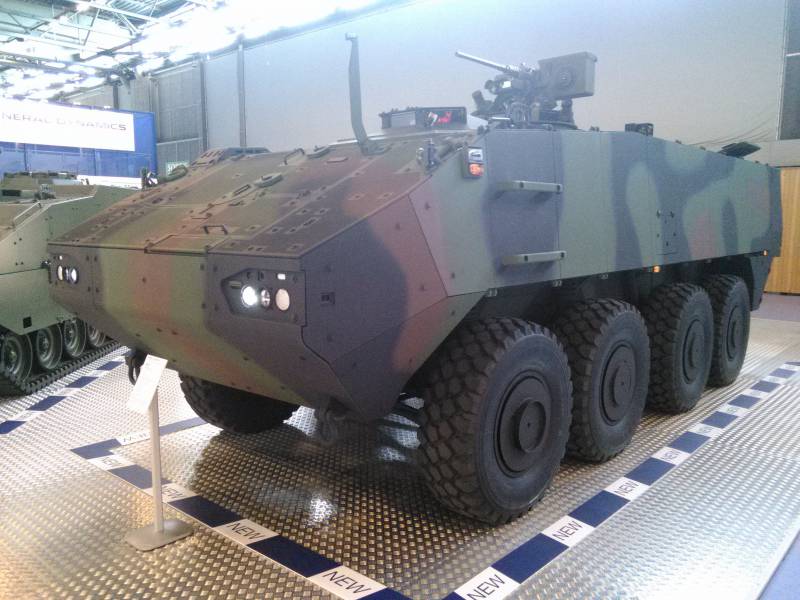
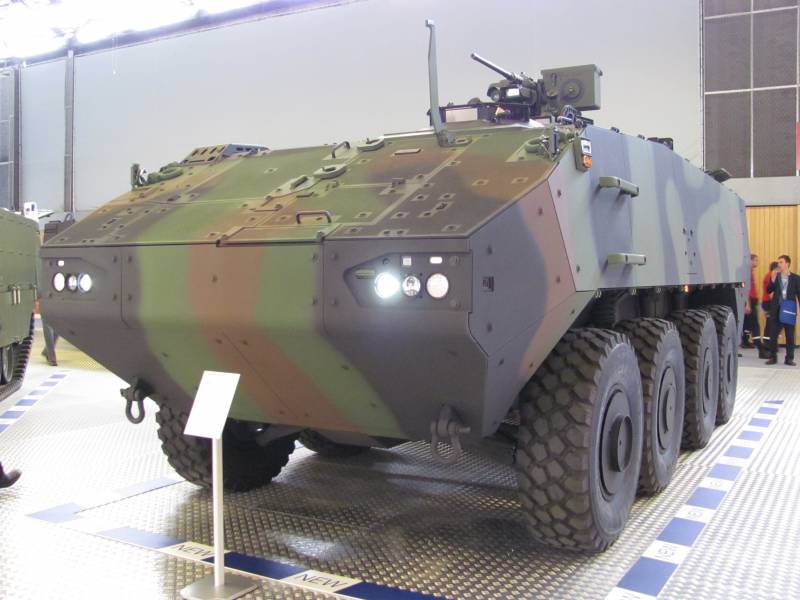
Information